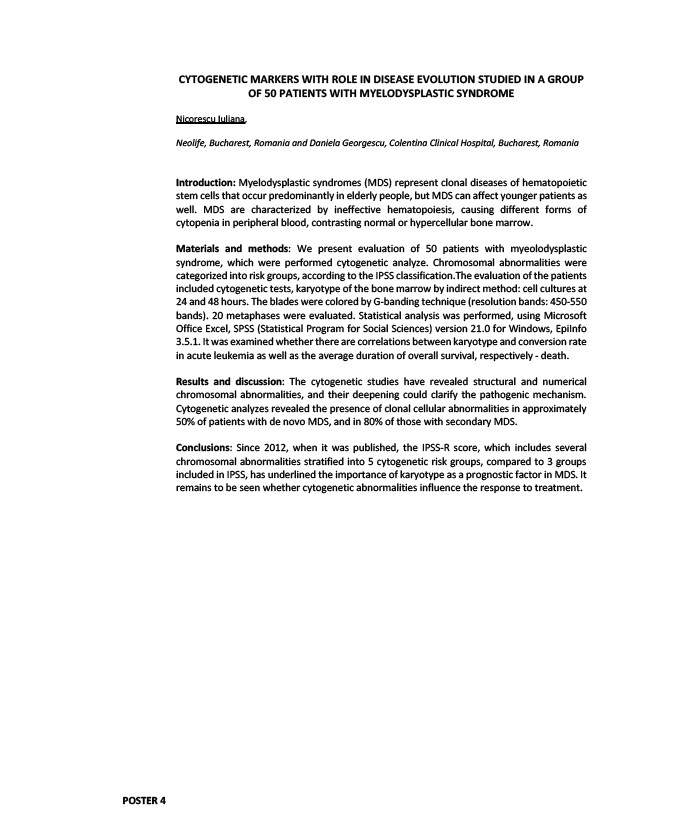
CYTOGENETIC MARKERS WITH ROLE IN DISEASE EVOLUTION STUDIED IN A GROUP
OF 50 PATIENTS WITH MYELODYSPLASTIC SYNDROME
Nicorescu Iuliana,
Neolife, Bucharest, Romania and Daniela Georgescu, Colentina Clinical Hospital, Bucharest, Romania
I
ntroduction: Myelodysplastic syndromes (MDS) represent clonal diseases of hematopoietic
stem cells that occur predominantly in elderly people, but MDS can affect younger patients as
well. MDS are characterized by ineffective hematopoiesis, causing different forms of
cytopenia in peripheral blood, contrasting normal or hypercellular bone marrow.
Materials and methods: We present evaluation of 50 patients with myeolodysplastic
syndrome, which were performed cytogenetic analyze. Chromosomal abnormalities were
categorized into risk groups, according to the IPSS classification.The evaluation of the patients
included cytogenetic tests, karyotype of the bone marrow by indirect method: cell cultures at
24 and 48 hours. The blades were colored by G-banding technique (resolution bands: 450-550
bands). 20 metaphases were evaluated. Statistical analysis was performed, using Microsoft
Office Excel, SPSS (Statistical Program for Social Sciences) version 21.0 for Windows, EpiInfo
3.5.1. It was examined whether there are correlations between karyotype and conversion rate
in acute leukemia as well as the average duration of overall survival, respectively - death.
Results and discussion: The cytogenetic studies have revealed structural and numerical
chromosomal abnormalities, and their deepening could clarify the pathogenic mechanism.
Cytogenetic analyzes revealed the presence of clonal cellular abnormalities in approximately
50% of patients with de novo MDS, and in 80% of those with secondary MDS.
Conclusions: Since 2012, when it was published, the IPSS-R score, which includes several
chromosomal abnormalities stratified into 5 cytogenetic risk groups, compared to 3 groups
included in IPSS, has underlined the importance of karyotype as a prognostic factor in MDS. It
remains to be seen whether cytogenetic abnormalities influence the response to treatment.
POSTER 4